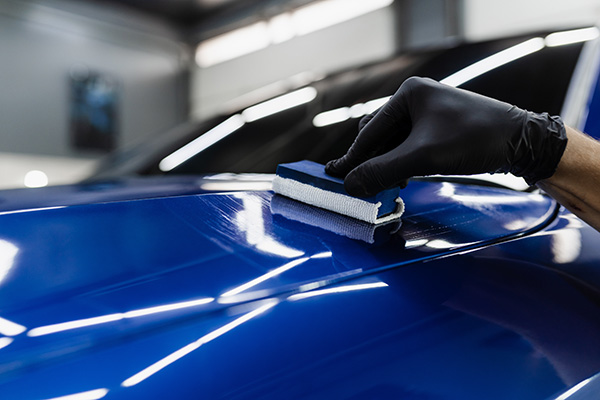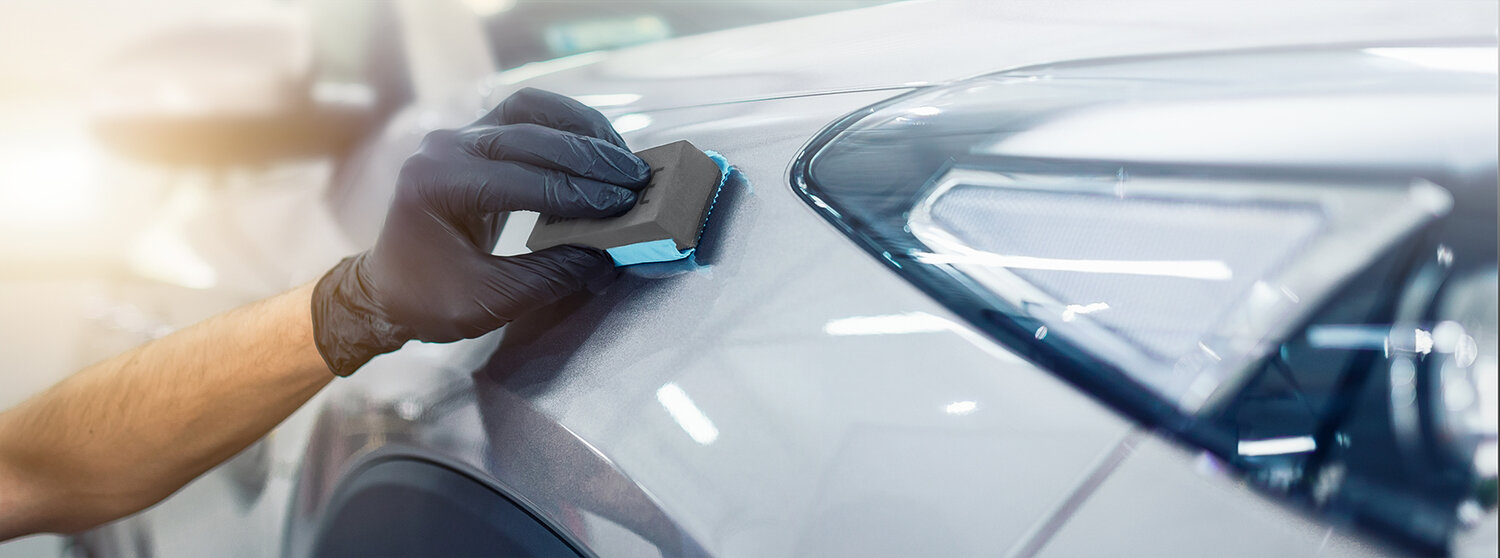Comprehending the Science Behind Ceramic Coating for Enhanced Automobile Toughness
The science of ceramic finish is reinventing car upkeep by giving an awesome shield versus extreme ecological variables. At its core, this innovation takes advantage of the power of silicon dioxide and titanium dioxide to create a long lasting, safety layer. What specifically makes these substances so effective in safeguarding a car's outside? As we check out the detailed structure and application procedure of ceramic coatings, we uncover the keys behind their premium protection and long life. Just how does this contrast to typical techniques, and what ramifications does it have for automobile maintenance in the lengthy term? The responses might stun you.

Structure of Ceramic Coatings
Ceramic coverings are primarily made up of silicon dioxide (SiO2), which is stemmed from all-natural products like quartz and sand. This compound forms the backbone of the coating, offering its particular solidity and resistance to environmental components. In addition to SiO2, ceramic finishes typically integrate titanium dioxide (TiO2) for improved UV defense and enhanced resistance to ecological pollutants. These nanocomposite materials create a durable, chemical bond with the car's surface, offering an enduring safety layer.
The formulation of ceramic layers is a precise process where the focus of SiO2 can considerably affect the layer's performance. Greater SiO2 content typically results in greater resilience and solidity, adding to the finish's capability to withstand scrapes and chemical etching. However, the equilibrium of parts is critical; excessive SiO2 can make the finish weak, while inadequate can compromise its safety homes.
Manufacturers may also incorporate extra materials, such as polysilazane, to boost adaptability and convenience of application. These ingredients improve the finishing's hydrophobic buildings, making certain water and contaminants grain off the surface easily. This engineered make-up underscores the efficacy of ceramic finishes in guarding a vehicle's exterior against a selection of unfavorable problems.
Application Process Clarified
Applying a ceramic covering to a vehicle entails several vital actions, each vital to making sure optimum adhesion and performance of the safety layer - ceramic coating. The procedure starts with a thorough wash and purification of the car's surface area to eliminate dirt, crud, and previous waxes or sealants. This action is important as any type of pollutants left on the surface area can prevent the coating's capability to bond successfully
Adhering to the preliminary cleaning, the following action involves polishing the automobile to remove any kind of imperfections, such as swirl marks or scrapes. Polishing makes certain a smooth surface, which is vital for the covering to stick appropriately and supply an uniform surface. After brightening, a surface prep work spray is made use of to eliminate any kind of staying residues and make sure that the surface area is completely clean.

Protective Benefits
Commonly hailed for its remarkable safety high qualities, a ceramic finish supplies many advantages that significantly improve vehicle toughness. At its core, ceramic finish forms a hard, semi-permanent obstacle over a car's exterior, which acts as a guard against different ecological threats.
Moreover, ceramic coverings exhibit hydrophobic residential properties, suggesting they repel water and help with a self-cleaning effect. This feature decreases the adherence of dirt and mud, simplifying upkeep and cleansing procedures. The finish's resistance to chemical etching better guarantees that the automobile's surface area continues to be unblemished in spite of direct exposure to severe cleaner and contaminants.
Along with these protective benefits, the ceramic finishing improves an automobile's visual charm by producing a glossy finish that emphasizes shade depth and clearness. This not just sustains the vehicle's visual allure however additionally adds to its long-term worth by protecting the stability of its exterior with time.
Contrasting to Typical Methods
Unlike standard methods of vehicle security, such as shaving or sealants, ceramic layers use a more lasting and long lasting service. Where waxes and sealers normally give a momentary layer of defense, often calling for reapplication every few months, ceramic layers develop a semi-permanent bond with the automobile's paint. This bond creates a safety layer that is resistant to ecological contaminants, UV damages, and small abrasions.
Typical waxes are primarily made up of all-natural parts like carnauba wax, Discover More Here supplying a glossy finish however lacking the robust protective qualities of ceramic coverings. Sealers, while artificial and offering slightly much better resilience than waxes, still drop brief in comparison to the strength and chemical resistance of ceramic finishes. The innovative modern technology of ceramic coatings includes nanotechnology, which enables them to complete tiny blemishes in the paint surface area, causing a smoother and extra hydrophobic coating.
In terms of application, ceramic finishes require a more careful process, typically demanding view publisher site expert installation to make certain optimum performance. This contrasts with the reasonably simple application of sealants and waxes, which can be applied in the house. The superior security and aesthetic improvement given by ceramic coverings justify the investment for those seeking long-term automobile preservation.
Long Life and Maintenance
How does the durability of ceramic layers equate right into ease of maintenance for car owners? The advanced solution of ceramic coverings provides a robust safety layer on the automobile's surface area, which significantly extends the lifespan of the vehicle's exterior coating.
Additionally, the hydrophobic nature of ceramic finishings allows water and various other fluids to grain up and roll off the surface, bring dust and debris with them. While the finishing itself is durable, it is not entirely maintenance-free. Therefore, you can try these out ceramic coverings offer a beneficial balance between long-term sturdiness and streamlined upkeep for automobile treatment.
Verdict
Ceramic finishes, with their advanced chemical make-up of silicon dioxide and titanium dioxide, supply a formidable obstacle against environmental damages, considerably boosting automobile resilience. When contrasted to conventional techniques, ceramic finishings offer remarkable protection versus UV rays, oxidation, and chemical etching - ceramic coating.
The formulation of ceramic finishes is a precise process where the focus of SiO2 can dramatically influence the layer's performance.Using a ceramic coating to an automobile includes numerous vital actions, each important to making certain optimal bond and efficiency of the protective layer.Typically hailed for its remarkable protective top qualities, a ceramic coating uses countless benefits that dramatically enhance car longevity. The advanced formulation of ceramic finishes gives a durable safety layer on the vehicle's surface, which substantially expands the life-span of the car's exterior surface.Ceramic coatings, with their advanced chemical composition of silicon dioxide and titanium dioxide, offer a powerful obstacle versus ecological damages, substantially boosting vehicle sturdiness.